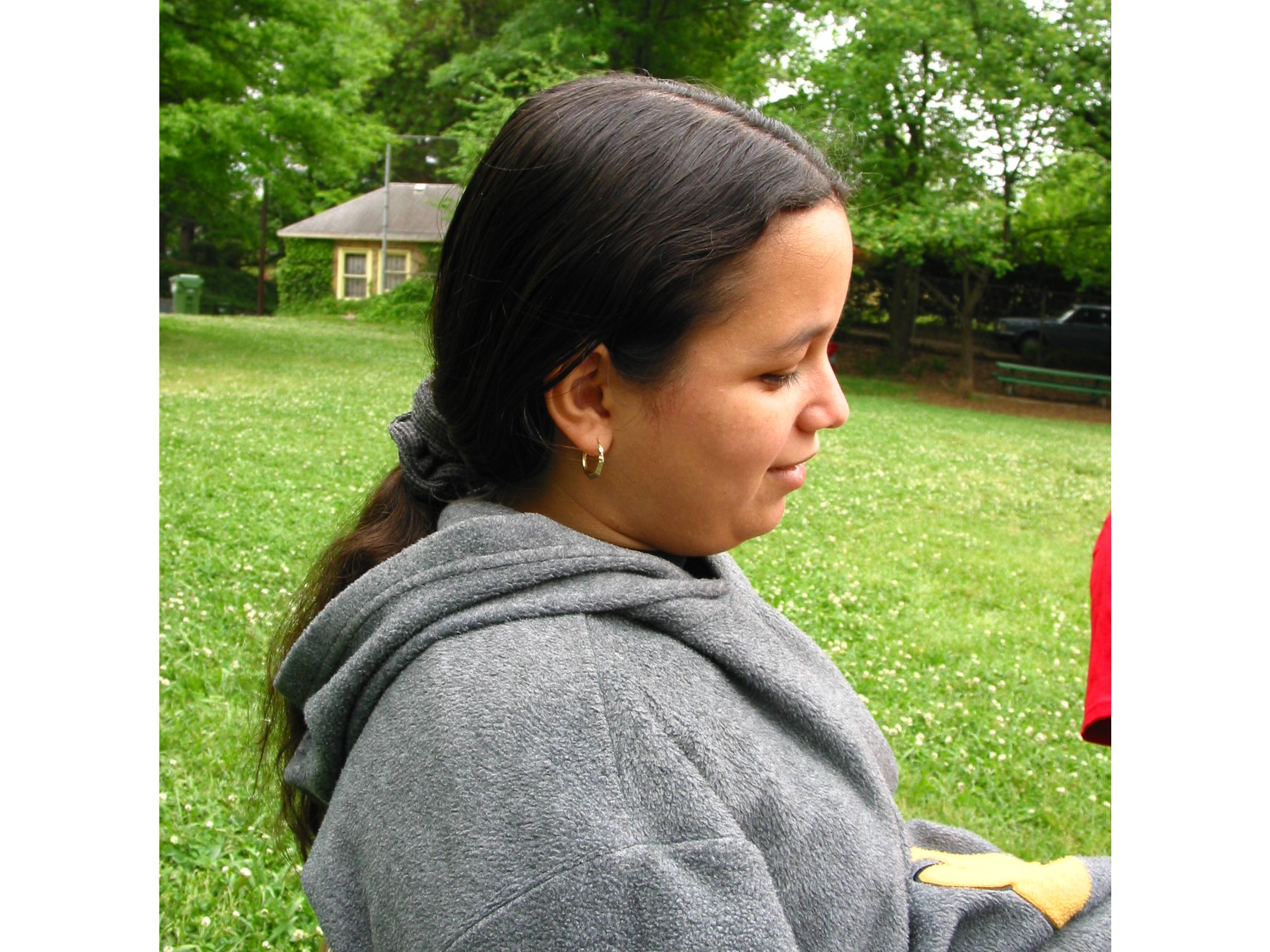 Patty Pichardo is graduating Spring 2002. She is continuing graduate
studies at Georgia Tech. In fact, she has a VIGRE/GT Traineeship and Goizueta
Fellowship, which will be quite a nice step up from being an undergrad
TA. Especially 'cuz she won't have to be a TA next year.
Patty Pichardo is graduating Spring 2002. She is continuing graduate
studies at Georgia Tech. In fact, she has a VIGRE/GT Traineeship and Goizueta
Fellowship, which will be quite a nice step up from being an undergrad
TA. Especially 'cuz she won't have to be a TA next year. 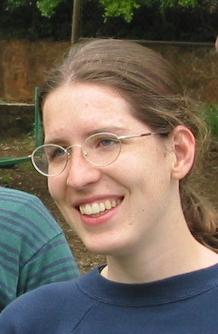 Blair Dowling writes:
Blair Dowling writes:
I'm spending this summer with the College of Computing's Study Abroad Program in Barcelona, Spain, taking two computer sciences classes, and an architecture course. I'm planning on continuing my research with Dr. Tetali into next year, and am doing a senior research project with Dr. Randall, of the CS department next fall. I'm currently planning to continue with my involvement in both the Putnam Examination, and Pi Mu Epsilon throughout next school year, though since I'm graduating in May 2003, I'd love to have some younger students become more involved next year.
Blair also reports being sad that she won't TA in the fall, because of a heavy course load,
This area of math/finance was largely created in the 1980s and has quickly become an important, even essential, aspect of many modern corporations.
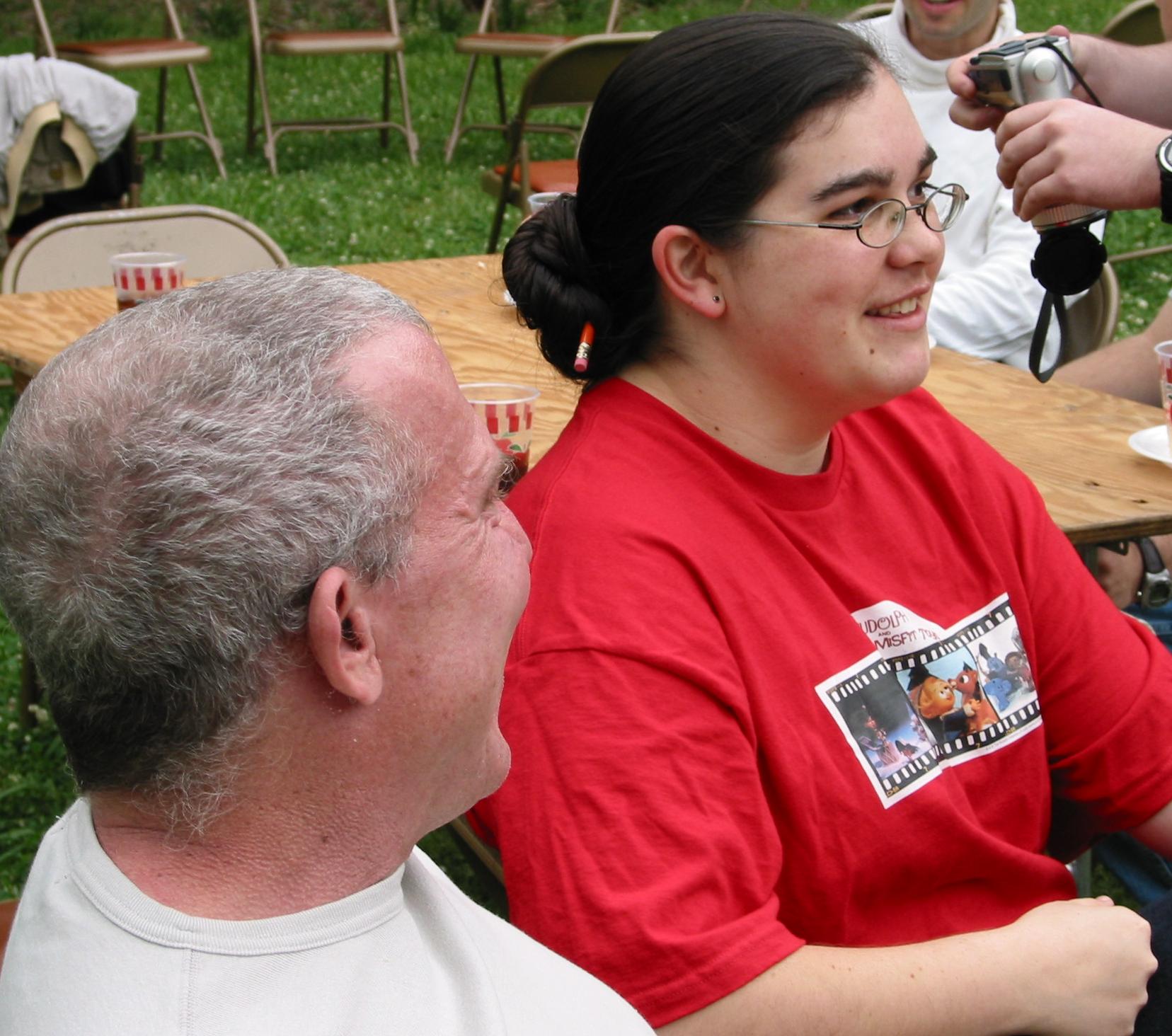 Claire Conner (dmath, graduating Spring 2003) is completing her last
Co-op work assignment during Spring 2002 with New Energy Associates, a
firm developing financial software for energy markets. (This is a very
difficult and complicated task.) Claire was also Co-op representative to
the Georgia Tech Student Government and Co-op Club president in academic
year 2001-2002. She has a strong interest in cryptography, which she is
currently studying in her Math Senior Project and CS Theory 2 classes.
Claire Conner (dmath, graduating Spring 2003) is completing her last
Co-op work assignment during Spring 2002 with New Energy Associates, a
firm developing financial software for energy markets. (This is a very
difficult and complicated task.) Claire was also Co-op representative to
the Georgia Tech Student Government and Co-op Club president in academic
year 2001-2002. She has a strong interest in cryptography, which she is
currently studying in her Math Senior Project and CS Theory 2 classes.
Editor's Note: The software problem that Claire is working on is indeed one very challenging problem. Financial Mathematics was first developed for the stock market and other highly liquid markets. The complicated control and optimization mathematics developed for these markets is now taught in specialized masters degree programs, including GT.
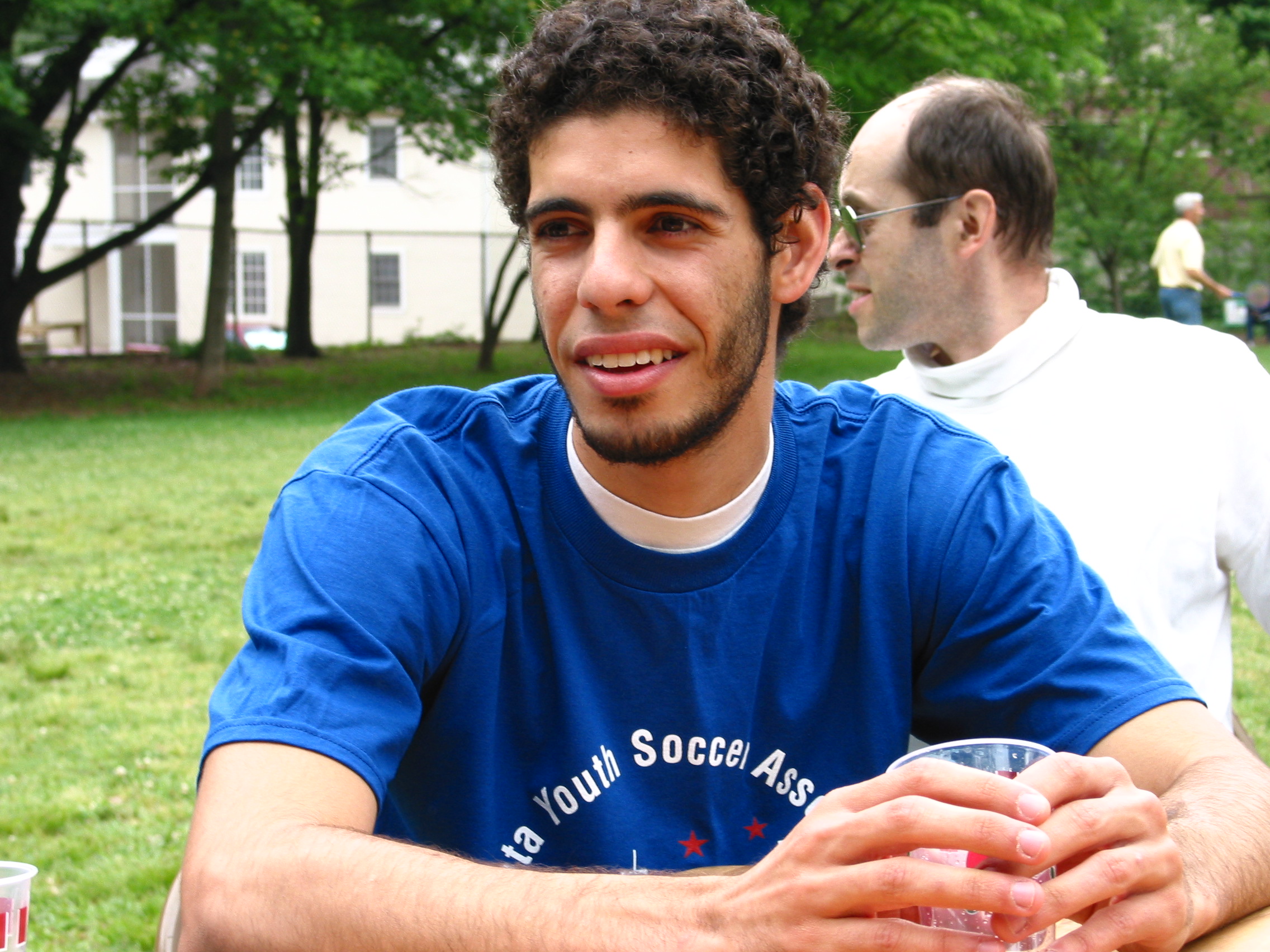 Clark Alexander writes: "I will for certain be travelling to University
of Maryland this summer to do research with the experimental geometry lab.
The project will involve hyperbolic geometry and something about 3-manifolds."
Clark Alexander writes: "I will for certain be travelling to University
of Maryland this summer to do research with the experimental geometry lab.
The project will involve hyperbolic geometry and something about 3-manifolds." (1) How can we use formal logic to codify typical mathematics in a machine verifiable form?
This exploration would start with filling in the holes in my knowledge of predicate calculus and using the program metamath (http://www.metamath.org/) to codify some basic proofs of theorems from Abstract Algebra. The basic pretense behind this project is that several large works (e.g. the Classification of the Simple Groups) are simply too large for any person to verify by hand and be absolutely sure he has not overlooked something. Codifying proofs and theorems in a database that is verifiable by a computer may offer us a valuable tool.
Also, I would like to see if I can codify some basic problems from combinatorics and the proofs their results. It always seemed rather bogus to me that someone would ask "Suppose you have a bus with one driver and fifteen students. There are twenty seats and one for the bus driver. How many valid sittings are there?" And with some hand waving one points out how many there must be. Perhaps this is the best we can do. But perhaps there is a proper natural symbolic representation we could have for this sort of problem. I could then contrast these attempts with the original problem and its solution. Does presenting a formal proof detract from understanding? Can we have our cake and eat it too: can we both have logic-level proof AND understanding? If so how? People tend to think in geometric manners; what geometric representations can be represented as alternatives to predicate calculus, and can such pictures be treated formally in provable, verifiable ways?
(2) Once we have a structure for representing logically our mathematics, can we use a computer to discern important properties and patterns about our mathematical objects, and if so how?
That is, in Abstract Algebra we have defined certain properties of operators which we find important in some way - commutativity, associativity, alternate associativity - from which many other "nice" properties follows. Are there less obvious properties from we might find in sets with operators that give us nice properties? What are the patterns that we see if we look at a selection of quasigroups? Can we use monte carlo methods to look for patterns which we might then put forward as hypotheses to then attempt to prove? Might we find things as important as Sylow's theorems in this manner? It's much of a "pi in the sky" question, but it's one that has perked my interest from time to time.
Alternatively I could try to construct a Theorem Proving System, which given certain truths, could try to deduce useful theorems. Embedding heuristics for "useful" could be quite a challenge.
(3) What do we want to do with computation? Why is it seen as such a fluid thing - practicing computer scientists commonly eschew the formal methods that seem to me essential? How could formal methods be applied to complex software systems, and what are the limits to such applications and why?
I would start this with a survey of texts both on Software proof systems such as Zed, some remedial reading on lambda calculus and functional programming, and a couple of texts on programming as a mathematical art, specifically, I'd like to explore Dijkstra's "A Discipline of Programming" and "Predicate Calculus and Program Semantics".
(3a) From this starting point I could draw material to try tackling what I believe to be an NP-Complete problem - a variant of the classical SAT problem called "Paint by Number", a pencil puzzle game which appeared in GAMES magazine in the 1990s. This I believe should take me on a journey through enumeration methods, some combinatorics, perhaps some graph theory, and in general should give me a good amount of ground to explore.
(3b) I could alternatively survey various software systems and with each ask the question "What elements of this system are (not) provably correct and why?" Which elements have simply ill-defined requirements; which are impossible to do correctly; which are trying to correct in some way for a break of an assumption of the programming model (out of memory conditions and other errors) and are these attempts misled in their nature, or useful?
Suppose for instance we are examining the halting problem and have written a program that determines whether a program will halt. Obviously such a program will not work for every program. But then, perhaps our program, by looking for certain signatures, will work, but only in a restricted subspace of the space of all programs. People often, I think, get caught in the rut that simply because the general case is impossible that the whole endeavour is hopeless.
Perhaps I will find that the vast majority of software has nothing to do with reality, since pre- and post- conditions are so rarely stated properly. The problem then may become, "What is the proper context within which we can look at the mathematically verifiable properties of our program?"
I will be a graduate student here (masters) at Georgia Tech, with the college of computing, in the Fall. My long term plans are to get a Phd in theoretical computer science. My math background is a definite plus (and almost a prerequisite) for work in this area.
Over the summer I'm going to work with Dr. Ding at the CoC on some topics in coding theory and cryptography.
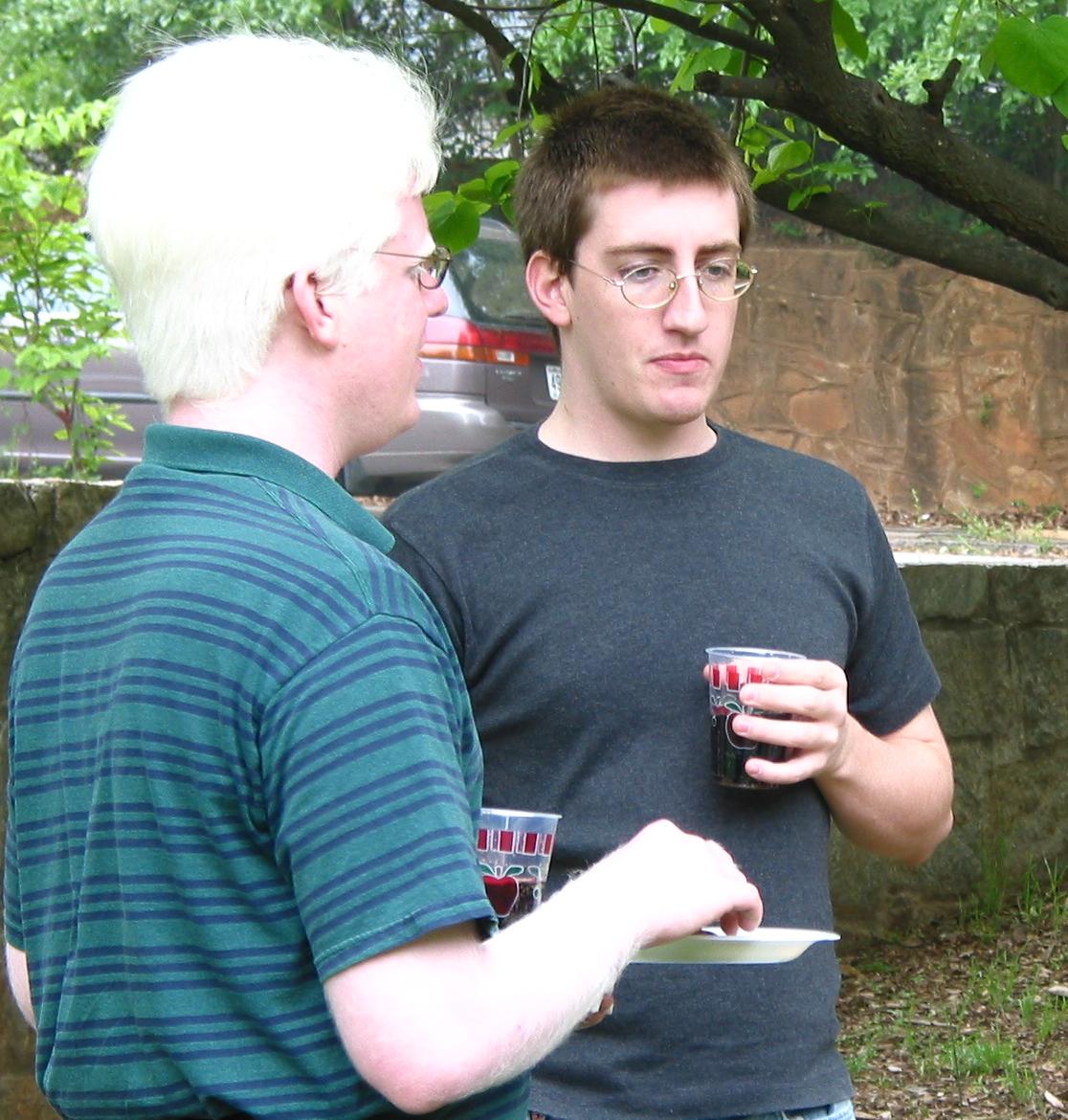 The topic of Joe Montgomery's REU is " Classification of varieties
with degenerate Gauss maps."
The topic of Joe Montgomery's REU is " Classification of varieties
with degenerate Gauss maps."
Given a surface in Euclidean three space, one can define its Gauss map, taking a point to its normal line translated to the origin, or equivalently, a point to its tangent space in the Grassmanian. In the analytic category, surfaces with degenerate Gauss maps (that is, where the image is one-dimensional) have been completely classified, they are either cones over a point or the union of tangent lines to a curve. The same question in higher dimensions and codimensions is open. Montgomery will work on this open question, building on the classification results of Griffiths-Harris, and Akivis-Goldberg for complex subvarieties of projective space with degenerate Gauss maps.
The classical Lefshetz theorem implies that much of the topology of a smooth hypersurface in projective space is inherited from the ambient projective space. One of its standard proofs uses classical Morse theory, where the topology of a manifold is studied via critical points of a sufficiently generic function on it. A more general theorem, due to W. Barth, was proved in the early 1970's stating that smooth varieties of small codimension also inherit much of their topology from the ambient projective space. Barth's proof is rather complicated, but recently there is a new proof, due to Schoen and Wolfson, based on ideas of Gromov, based on Morse theory in infinite dimensions. Norenberg will work through Milnor's classic book on Morse theory and the Schoen-Wolfson paper. If time allows, she will study additional recent work generalizing these results and calculate some new examples.
Malika Hines graduated with honors, and also writes that she may be back in touch with questions about graduate school.